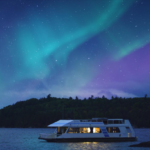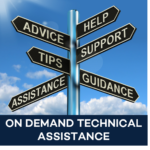
Virtual Resource Center for Public Health Emergency Preparedness
States have a unique role in public health emergency management. They develop policies and authorities that govern strategy and activities for public health emergency preparedness, response and recovery activities. Recent incidents, including the national significant COVID-19, Ebola, Zika and Hepatitis C outbreaks, as well as more localized emergencies such as water supply contamination and measles re-emergence, have highlighted the challenges that states face when responding to public health emergencies. NGA assists states in understanding and developing the legal, political and regulatory frameworks that enable effective management of public health emergencies.
This virtual resource center was developed as a repository for state-focused resources pertaining to public health emergency preparedness policy. The resources are targeted at state leaders in the fields of public health, emergency management and administration, although due to the cross-disciplinary nature of public health emergency preparedness, a broader audience may find these tools useful. Resources are grouped into four major sections:
- Lessons Learned: advice for states from other states, rooted in real-life experiences in policy development for public health emergency preparedness.
- Promising Practices: a collection of ideas and activities that have been implemented and evaluated to varying degrees that have the potential to positively impact states in their pursuit of effective policy on public health emergency preparedness.
- State Examples: an archive of past state projects, including policy approaches and strategic implementation plans that support effective preparedness for and response to public health emergencies. Projects ranged from ensuring that public health is represented within the state fusion center to developing a playbook for legal authorities during a public health emergency.
- External Links: Additional documents, webinars and useful information from vetted sources that address additional policy topics such as isolation and quarantine practices and risk communication.
Contents
- Webinar Series On Legal Preparedness For Public Health Emergencies
- Public Health Preparedness And Response Workshop For State And Territorial Gubernatorial And Legislative Leadership
- Promising Practices
- Lessons Learned
- Lessons Learned From COVID-19
- 2019 States’ Plans To Enhance Public Health And Emergency Response
- 2018 States’ Plans To Enhance Public Health And Emergency Response
- Additional Resources
Webinar Series On Legal Preparedness For Public Health Emergencies
The National Governors Association, in collaboration with the American Bar Association, launched a webinar series on Equity and Policy Preparedness during Public Health Emergencies. Participants in all four webinars will consider lessons learned from past public health emergencies to inform their implementation of best practices for the future.
The guiding focus of this four-part series will be how responders can ensure equity and policy preparedness in the: 1) encouragement and enforcement of mitigation measures; 2) distribution and uptake of remedies and resources; 3) people experiencing homelessness; and 4) people who are incarcerated.
You can access the individual recordings, and PowerPoint slides for the webinars here. Or watch the playlist.
Public Health Preparedness And Response Workshop For State And Territorial Gubernatorial And Legislative Leadership
Governors and state legislators play a critical role in the success of any major public health response. Legislators make laws that can facilitate (or inhibit) a successful response. And governors make decisions that can result in lives saved or lives lost. With multiple threats (environmental, emerging infectious disease, terrorism, etc.) states may activate their state emergency operations centers with increasing frequency to address minor incidents and complex emergency crises that impact health. Therefore, it is imperative that public officials are become familiar with public health emergencies and confront policy challenges that may impede a successful response.
To better support state governments in ensuring readiness for public health emergencies, National Governors Association Solution: Center for Best Practices (NGA Center) has partnered with Centers for Disease Control and Prevention (CDC)’s Center for Preparedness and Response to support the design and implementation of promising practices, policies, and procedures to address policy challenges in public health preparedness and response.
The NGA Center and the CDC’s Center for Preparedness and Response hosts a public health preparedness workshop for governors’ senior staff, legislators, and other state officials. The purpose of the workshop is to develop policy approaches and strategic implementation plans that support effective preparedness for and response to public health emergencies. As part of this opportunity, states receive technical assistance from the NGA Center to strengthen their ability to handle a broad range of public health emergencies.
These projects are made possible through a grant from the Centers for Disease Control and Prevention.
Promising Practices
- Declaring a public health emergency can require significant legal review. Conducting that legal analysis in advance enables a state to more nimbly respond to an emergency.
- Convening a multi-disciplinary team to discuss needs for public health preparedness is crucial to establishing a comprehensive plan for policy changes.
- Strengthening understanding within the state legislature of public health preparedness and emergency response is an important step for enhancing the state policy framework around public health preparedness and addressing any legislative needs.
- To enhance coordination during a response, ensure the state health official has significant insight into public health preparedness and a strong working relationship.
- Assigning a public health analyst to the fusion center allows for the homeland security, emergency management and public health sectors to conduct their work using a common operating platform that can enhance public health preparedness.
- Involving the governor’s office helps create momentum and obtain buy-in around strategic public health preparedness planning to create effective policy change.
Lessons Learned
In a public health emergency, be first, be right, be credible, express empathy, promote action and show respect.
Legal reviews of public health emergency authorities should be tested—through processes like exercises or tabletops—in order to ensure that the state is prepared when an emergency occurs.
Due to the wide spectrum of state, local, and regional personnel necessary for a response, a multi-disciplinary approach is necessary for public health preparedness and planning.
Implementing long-term improvements to public health preparedness policies can be challenging in the midst of an emergency response.
Lessons Learned from COVID-19
Gubernatorial Authority in Public Health Emergencies
Gubernatorial emergency powers provide Governors avenues to enhance capabilities, coordination, collaboration, and provide flexibility in their response efforts. Using their emergency powers to respond to COVID-19, gubernatorial actions have included the following: activating their state emergency response plans and mutual aid agreements; activating their state emergency operations center and incident command system; expending funds and deploying personnel, equipment, supplies, and stockpiles.
Operational Coordination Across State Agencies
Coordination between agencies across multiple levels of government, including emergency management agencies, their public health counterparts, private sector healthcare organizations, federal coordinating agencies, and local first responders, is necessary. For prevention and mitigation, operational coordination enables unity of effort, reduces misuse, errors, duplication of activity, and optimizes the amount of human, physical, and financial resources available for various missions.
Managing Resource Limitations
The surge in positivity rates and the emergence of hotspots created a need for personal protective equipment (PPE) and an expanded workforce to support testing and contact tracing efforts. Governors have exercised their administrative and regulatory authorities to address supply chain issues and bolster their workforces such as engaging in group purchasing orders (GPOs) and other bulk acquisition mechanisms to optimize supply availability; professional licensure, permit, or fee requirements for state medical, nursing, or other health care providers.
Medical Surge Capacity
The U.S. health care system has been overwhelmed with many hospitals operating at or near 100 percent capacity. State-level declarations of emergency have provided Governors a broad range of authorities to assist the health care system in meeting the surge in demand, including the early discharge of hospitalized patients who are close to being completely well; the diversion of patients away from overwhelmed facilities; the postponement of elective and non-emergency medical procedures; and the utilization of alternate care facilities.
Planning for Vaccine Distribution
Confronted with an unprecedented challenge, the widespread public uptake of a safe and effective vaccine will be a critical element in containing the COVID-19 pandemic and resuming normal economic, educational, and social activities. Governors have and must continue to invest resources to support vaccine distribution, which will include receiving vaccine allocations from the Federal government; standing up and operating Points of Distribution (POD); managing the systems for ordering, distributing, and monitoring them; and supporting the administration of vaccines in a wide variety of health care and community settings.
2018 States’ Plans To Enhance Public Health And Emergency Response
(click image for State information)
Additional Resources
- Reframing the Opioid Epidemic as a National Emergency
- The Case for Streamlining Emergency Declaration Authorities
- The Changing Nature and Scope of Public Health Emergencies in Response to Annual Flu
- The Opioid Epidemic and the Future of Public Health Emergencies
- NACCHO Administrative Preparedness Presentation
- Governor’s Guide to Public Health Preparedness
- CDC Center for Preparedness and Response
- Drexel University Dornsife School of Public Health Social Media Message Library
- An Assessment of State Laws Providing Gubernatorial Authority to Remove Legal Barriers to Emergency Response
- Emergency Declarations and Tribes Mechanisms Under Tribal and Federal Law
- Evolution of Law in Biopreparedness
- Judicial Opinions Arising from Emergency Preparedness, Response, and Recovery Activities
Governor’s Guide to Public Health Preparedness
Infectious diseases such as COVID-19, Zika, Ebola, and Hepatitis C present an obvious danger to public health. It is important to recognize that natural and man-made disasters create similar threats. As these linkages become more well understood, Governors can take several actions to incorporate the discipline of public health into their emergency preparedness and response strategies.
- Action Step 1: Identify areas in your emergency operations and response planning, where attention to public health preparedness may be necessary.
- Action Step 2: Define the communications processes and protocols between your office and response agencies involved in response and recovery.
- Action Step 3: Educate yourself and your leadership team on public health preparedness, including resources available to support state and local entities.
- Action Step 4: Understand your authority to declare public health emergencies and the role and responsibilities of your agencies as well as those of the public health department during such an event.
The Governor’s Guide to Public Health Preparedness serves as a primer on the subject, detailing current strategies, available resources, and existing partnerships that may help Governors bridge the gap between the disciplines of public safety and public health.
Download the Guide
Funding for this Virtual Resource Center for Public Health Emergency Preparedness was made possible (in part) by the Centers for Disease Control and Prevention. The views expressed do not necessarily reflect the official policies of the Department of Health and Human Services.














